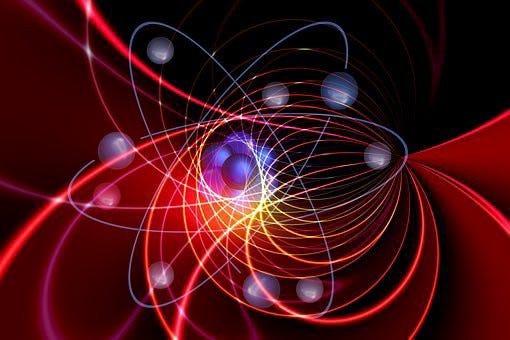Quantum Physics vs. Vedanta: 3 Insights by Hans-Peter Dürr
Hans-Peter Dürr, a prominent German physicist and former collaborator of Werner Heisenberg, found surprising resonances between the mysterious world of subatomic particles and the spiritual insights of ancient India. Instead of seeing them as conflicting worldviews, Dürr proposed for Quantum Physics vs. Vedanta that quantum physics and Vedanta echo each other; Two languages pointing to the same ultimate reality. In interviews and talks, Dürr often expressed amazement at how closely quantum insights mirrored Vedantic thought. To him, quantum physics wasn’t just about particles and probabilities—it was about reality itself shifting from a machine-like model to something far more holistic, conscious, and spiritual. So in this article delight, we explore three of Hans-Peter Dürr’s most profound insights where quantum physics converges with Vedanta.
Quantum Physics vs. Vedanta: 3 Insights by Hans-Peter Dürr
The Illusion of Matter: Quantum Fields and Vedantic Maya
Hans-Peter Dürr challenged the age-old belief that the universe is made up of solid, tangible matter. According to him, when we zoom into the quantum level, what appears to be “stuff” is actually just dynamic patterns of energy and probability—no solid particles, no fixed forms. What we think of as matter is not truly “real” in the conventional sense; it’s a fleeting arrangement that depends entirely on context and interaction.
“Reality is not made out of things; it is made out of relations.” – Hans-Peter Dürr
This insight beautifully aligns with the Vedantic concept of Maya, which states that the physical world perceived by our senses is an illusion—a cosmic play that conceals the unchanging truth beneath it. In Vedanta, Brahman is that ultimate reality: eternal, formless, and unaffected by the appearances of the material world. The forms we see are transient ripples on the surface of a deeper, boundless ocean of consciousness.
Consciousness as the Core
In the worldview of Vedanta, consciousness is not a byproduct of the brain. It is the source of all existence. Everything we experience from thoughts, emotions to even space and time, arises from this one infinite consciousness. This idea finds a striking echo in the thoughts of Hans-Peter Dürr. Through his deep engagement with quantum physics, Dürr came to believe that matter is not the foundation of reality. But something that emerges from a more subtle domain, perhaps best described as information, energy, or consciousness itself.
“What we have called matter is energy, whose vibration has been so lowered as to be perceptible to the senses. There is no matter.” – Hans-Peter Dürr
This aligns closely with Vedantic teachings, where the material world is viewed as a dense, vibrational expression of pure, unbounded awareness. Just as low-frequency sound is harder to detect, matter is seen as a slowed-down vibration of consciousness, made temporarily visible to our senses. In both perspectives, consciousness isn’t in the universe—It is the universe.
Non-Duality and Interconnectedness
Hans-Peter Dürr often emphasized that the universe is not made up of isolated, individual objects—but of relationships, patterns, and unity. At the quantum level, everything is entangled in a vast, interdependent web where separation is more of a perceptual illusion than a fundamental truth.
“Matter as we know it does not exist. All that exists is a web of relationships. In the Vedanta, this is called non-duality.” – Hans-Peter Dürr
This perfectly parallels the Vedantic philosophy of Advaita, which asserts that at the heart of everything lies Brahman. The singular, infinite consciousness in which all apparent dualities dissolve. The interconnectedness that quantum physics reveals is not a surprising anomaly to Vedanta, it is its starting point. From this lens, the cosmos is not a collection of separate entities but a unified field of being. Where everything is interwoven and flows from the same divine source. Dürr’s scientific insights and Vedantic teachings converge to offer a profound truth: we are not apart from reality. We are an inseparable part of it !
Final Takeaway | Quantum Physics vs. Vedanta
Hans-Peter Dürr’s work invites us to pause and reflect. Science and spirituality, when pursued with openness and humility, seem to arrive at the same doorstep. The quantum world is not cold and mechanistic. In point of fact, it is full of mystery, possibility, and connectedness. And Vedanta, far from being just ancient philosophy, becomes an intuitive map of this mysterious terrain. Perhaps, as Dürr suggests, the ultimate leap humanity must make is not technological, but conscious. Toward seeing ourselves not as isolated fragments, but as part of one infinite dance of energy, spirit, and love.
Further insights, DURR HANS-PETER FRAGMENT FROM THE BOOK “MATTER DOES NOT EXIST! https://www.sciencegate.app/document/10.22363
Read also : The Concept of Prakriti Across Different Texts: From the Gita to Vedanta https://thebrightdelights.com/the-concept-of-prakriti-across-different-texts-from-the-gita-to-vedanta/
